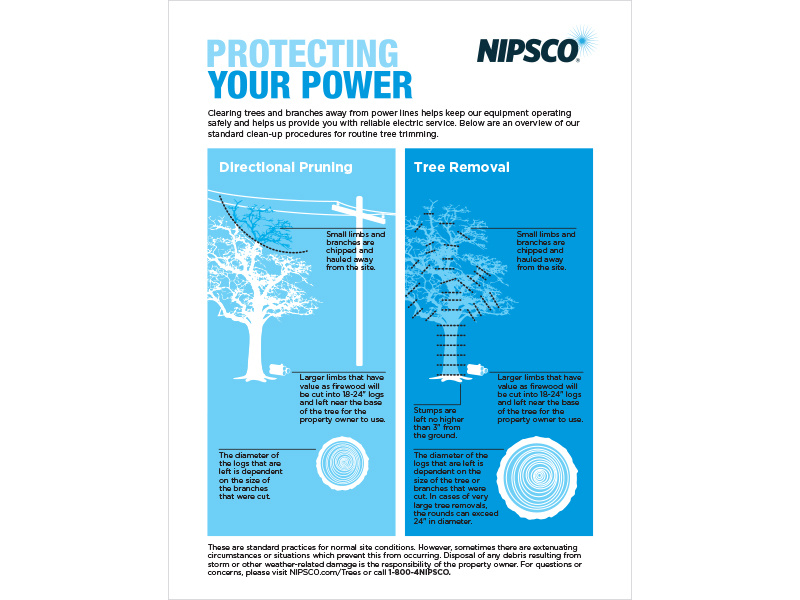Identifying The Correct Time For Tree Elimination - An Overview For Homeowners
Identifying The Correct Time For Tree Elimination - An Overview For Homeowners
Blog Article
Web Content Created By-Rollins Lucas
Trees include beauty and worth to residential or commercial property, but they can additionally pose a danger during extreme climate events. If a tree has quit expanding, is showing visible fungal development, or has a leaning trunk, it needs to be removed by a specialist to avoid home damage and injury.
For more information, go to a house owner resource reasonable co-hosted by HPD, the Center for New York City Neighborhoods, and Brooklyn-based real estate companions this evening in Bedford-Stuyvesant. click now will feature the Homeowner Handbook, a brand-new overview to help property owners browse the responsibilities of possessing a home.
1. tree chipping service or Perishing Branches
Trees are an essential part of your home's landscape, offering color and appeal. They likewise give shelter for wild animals and produce oxygen, but also healthy trees can experience illness that might necessitate their removal. Dead or dying trees aren't just undesirable, they can be hazardous. Their branches can drop throughout a tornado, bring about pricey residential or commercial property damage and injuries.
When a tree's branches start to die, it means that its structure is starting to break down. If the majority of its branches are dead, it is most likely time to remove it.
Try to find a lack of new growth, bark peeling, open wounds or dental caries, fungis growing on the trunk or roots and a basic look of degeneration in the whole cover. These indications of infection can show a significant problem that will certainly need professional tree services to deal with.
2. Leaning tree company auckland
While it's normal for trees to lean from time to time because of phototropism, if a tree has a hazardous or severe lean that's not as a result of natural processes - maybe an indicator that the tree requires to be removed. If the tree is leaning toward a high-voltage line, home, automobile, play framework or any other area that could be harmful to individuals if it falls, after that speaking to a specialist tree solution for elimination should be a top concern.
It's also vital to look for any kind of sudden changes in a tree's leaning as it can indicate damage to the roots or trunk that may cause dropping. This is specifically true throughout stormy weather, because high winds and rain-soaked soil can cause a lean to change quickly. Normal tracking, particularly during and after storms can help property owners acknowledge possible issues with their trees so they can call an arborist for a thorough analysis.
3. Pest Infestation
Some pest invasions, such as wood-boring bugs like emerald ash borer or sap-suckers like scale pests, are so extreme that they can cause a tree to die. The very best method to prevent pest infestation is to monitor your trees on a regular basis. Seek spots, holes, or stainings in the leaves and bark. Examine the trunk for cracks and indicators of insect damage, such as tunnels or tracks.
If a tree ends up being too plagued with insects, or is close to a home or high-voltage line, an arborist may recommend elimination. If a leaning tree creates a brand-new, unsteady lean, an arborist will likely suggest elimination also to make sure the security of people and property. If a damaged or dead tree continuously sheds too much branches, it is a sign that it is time to remove the tree. If a tree remains to shed branches for an extended time period, it could result in structural problems and prospective home damages.
4. Damaged Trunk
Trees are a beautiful and integral part of our landscape, yet they do need normal like maintain them healthy and balanced and risk-free. If a tree is damaged irreparable it is likely time for it to find down.
Look for indicators of damage to the trunk, consisting of vertical splits, seams, dead branch stubs, visible wounds or open cavities and serious tree-rot. The presence of fungi at the base of the trunk is an additional alerting indication. Fungis may suggest that the phloem and xylem (life-support cells) are jeopardized, allowing for the spread of condition or a future failing.
Also, think about whether the tree has stopped growing. Healthy trees will certainly have brand-new growth annually, which might be visible as buds or branches growing and expanding. If you don't see any brand-new growth, it's an excellent idea to have an arborist examine the tree and follow their suggestion for elimination. A dying or harmed tree can fall and cause residential or commercial property damages.